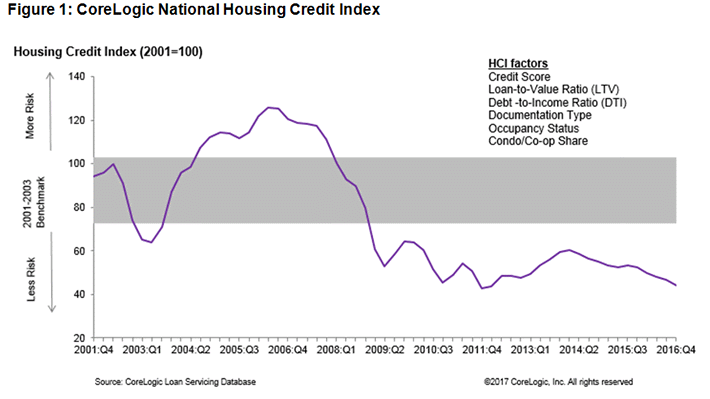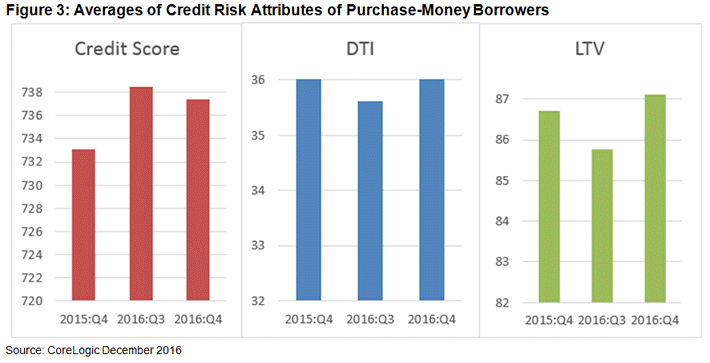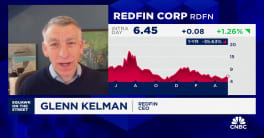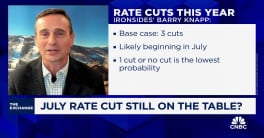In terms of credit risk, the loans originated in the fourth quarter of last year are among the highest quality mortgages originated since 2001 according to CoreLogic. The company's Housing Credit Index (HCI) compares those loans with those originated in previous quarters based on borrower credit scores, and debt-to-income (DTI) and loan-to-value (LTV) ratios. A rising score on the HCI indicates that new single-family loans have more credit risk than during the prior period, while a declining HCI means that new originations have less credit risk.

CoreLogic found the average credit score for money purchase loans rose 4 points from 733 in the fourth quarter of 2015 to 737 in the fourth quarter of 2016. In Q4 2016, the share of homebuyers with credit scores under 640 was about one-tenth of those in 2001.
The DTI for homebuyers was unchanged at an average of 36 percent in the two fourth quarter periods. The share of those with DTIs at or above 43 percent increased slightly from 2001.
LTV for homebuyers rose slightly year-over-year, from 86.7 percent in the fourth quarter of 2015 to 87.1 in the recent quarter, however the share of those with LTVs at or above 95 percent was up by more than a quarter compared with 2001.


Frank Nothaft, chief economist for CoreLogic, noted the characteristics of mortgage loans closed in the fourth quarter of 2016 had the characteristics that contribute to low default risk. "While our index indicates somewhat less risk than both a quarter and a year earlier, this partly reflects the large refinance share of fourth-quarter originations. Refinance borrowers typically have a lower LTV and DTI than purchase borrowers."
Nothaft observed that mortgage rates have moved higher since November and are anticipated to rise even further during 2017. "Refinance volume will decline with higher mortgage rates, and lenders generally will respond by applying the flexibility in underwriting guidelines to make loans to harder-to-qualify borrowers. As this occurs, we should observe our index signaling a gradual increase in default risk. The evolution to a more purchase-dominated lending mix is also likely to increase fraud risk."
In addition to loan level information on LTV, DTI, and credit scores, the HCI combines documentation level (full documentation of a borrower's economic conditions or incomplete levels of documentation, including no documentation), occupancy (owner-occupied primary residence, second home, or non-owner-occupied investment), and property type (condominium or co-op). It spans more than 15 years, covers all loan products in both the prime and subprime lending segments and includes all 50 states and the District of Columbia, permitting peak-to-peak and trough-to-trough business cycle comparisons across the U.S.







